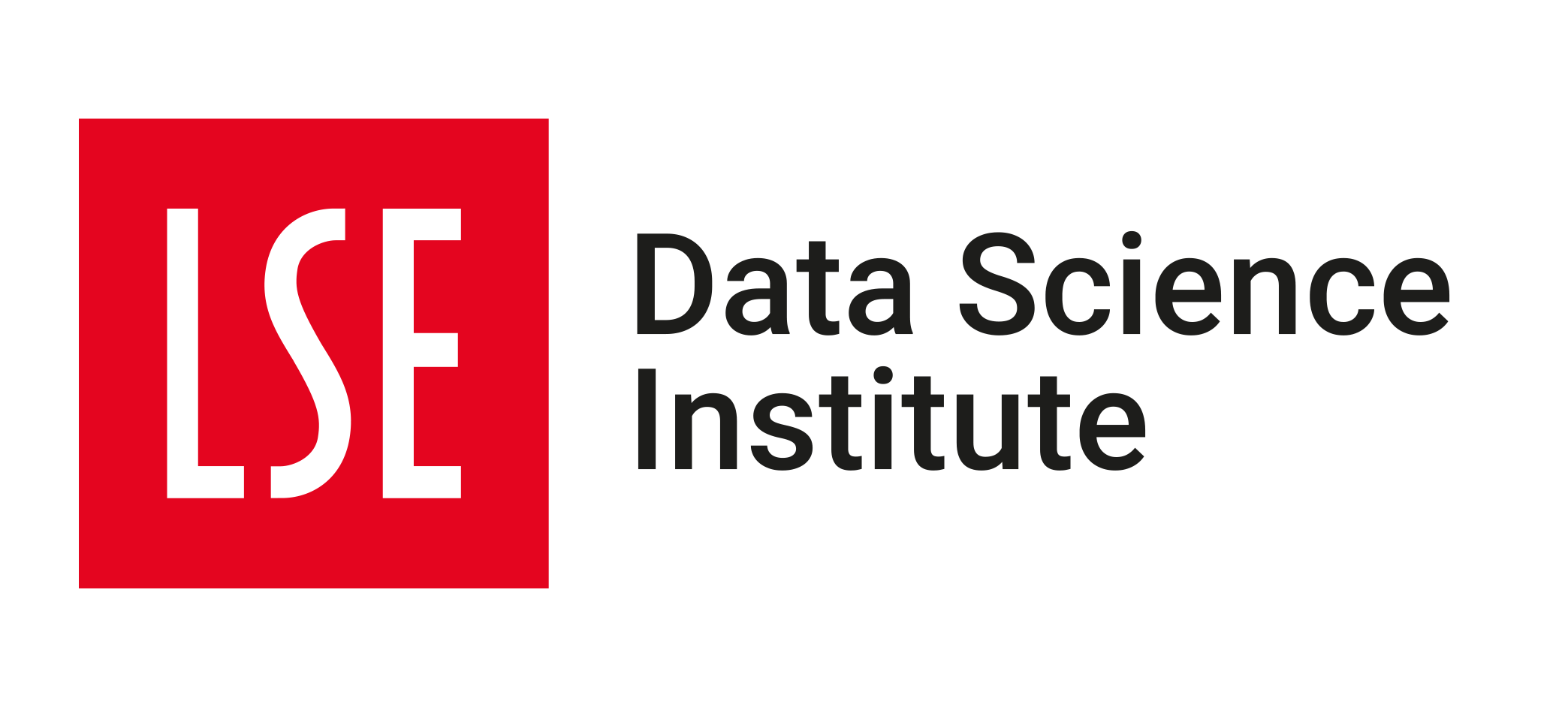flowchart LR
A(Input) --> B{Set of instructions/rules</br>to obtain the expected</br> output from the given input}
B --> C(Output)
🗓️ Week 03
Computational Thinking and Programming
DS101 – Fundamentals of Data Science
09 Oct 2023
The old data science Venn diagram
- This diagram (Conway 2010) is quite outdated, but today, it will prove helpful to think about the computer skills required in data science projects.
- We will focus on elements of these “hacking” skills today.
- Hands-on in-class exercises

Computational Thinking
What is computational thinking?
The mental skills and practices related to the following aspects of computing:
1️⃣ Designing computations that get computers to do the jobs for us
2️⃣ Explaining and interpreting the world as a complex information process
1️⃣ Designing computations
We usually have to think like computers to design the proper computations for the job.
- Input: numbers, symbols, lists
- Output: a solution
- Computation: deterministic calculations & symbolic manipulation
2️⃣ Explaining and interpreting the world
We can use computers to create models of the world.
Let us look at a simple, old example of a computational model for urban segregation (McCown 2014) ➡️

What is computational thinking?
Today our focus is on the first aspect:
1️⃣ Designing computations that get computers to do the jobs for us
2️⃣ Explaining and interpreting the world as a complex information process
Algorithms
Recipes for computers

Algorithms
- Clear and unambiguous: Each step of the algorithm should have one unambiguous meaning
- Finiteness: The algorithm is finite i.e it terminates after a finite time
- Language independent: the algorithm is composed of a set of instructions that can be implemented in any programming language and still lead to the same outcome
- Feasible: The algorithm must be simple, generic and practical so to be executed with the resources available. It cannot depend on future or non-existing technologies.
graph LR B((Algorithm characteristics))-->A(Well-defined inputs) B--> C(Well-defined outputs) B-->D(Clear and unambiguous) B-->E(Finiteness) B-->F(Language-independent) B-->G(Feasible)
Let’s look at an example
Problem Definition:
Whenever I receive a list of numbers, I want to ensure this list is ordered.

Breakdown
Input:
[10, 20, 42, 29, 50]
Output:
[10, 20, 29, 42, 50]
Computation:
How would you solve it❓
🎯 Action Point
Group up with the people of your respective tables and try to come up with a recipe that solves the problem, regardless of the list size.
Test that your recipe works for the following list:
[237, 153, 311, 33, 854, 212, 368, 42, 892, 755]Time for a break 🍵

After the break:
- An another algorithm example
- R vs Python
- Computational Notebooks
- Example from Kaggle
(no slides, all live demos)
Time to look at another example of algorithm
graph LR A(A) ---|2| B(B) B ---|5| D(D) A ---|6| C(C) C ---|8| D D ---|10| E(E) D ---|15| F(F) F ---|6| E E ---|2| G(G) F ---|6| G
Graph:
- Nodes (A, B,C,…)
- Edges (Undirected, weighted)
🎯 How do we get the shortest path between A and all the other nodes in this graph (i.e between A and B, A and D, A and G, etc…?
Pair with the people in your respective tables and discuss.
One possible solution: The Dijkstra algorithm
Step 1: Mark the source node with a current distance of 0 and the rest with infinity
Step 2: Set the non-visited node with the smallest current distance, as the current node, let’s say c (initially c is set to the source node).
Step 3: For each neighbour N of the current node c: add the current distance of c with the weight of the edge c-N. If it is smaller than the current distance of N, set it as the new current distance of N.
Step 4: Mark c as visited.
Step 5: Go to Step 2 if there are any unvisited nodes.
Applying Dijkstra on our example graph
graph LR A(A) ---|2| B(B) B ---|5| D(D) A ---|6| C(C) C ---|8| D D ---|10| E(E) D ---|15| F(F) F ---|6| E E ---|2| G(G) F ---|6| G
Source node: A
- Initially :
| A | B | C | D | E | F | G | |
|---|---|---|---|---|---|---|---|
| Distance | 0 | \(\infty\) | \(\infty\) | \(\infty\) | \(\infty\) | \(\infty\) | \(\infty\) |
Unvisited nodes: {A,B,C,D,E,F,G}
- Updating distance of nodes adjacent to A i.e B and C
| A | B | C | D | E | F | G | |
|---|---|---|---|---|---|---|---|
| Distance | 0 | 2 | 6 | \(\infty\) | \(\infty\) | \(\infty\) | \(\infty\) |
Closest node to source node (based on current distances): B
nodes on path: {A, B}
Unvisited nodes: {A,B,C,D,E,F,G}
- Next : C and D (adjacent to A and B)
| A | B | C | D | E | F | G | |
|---|---|---|---|---|---|---|---|
| Distance | 0 | 2 | 6 | 7 | \(\infty\) | \(\infty\) | \(\infty\) |
Unvisited nodes: {A,B,C,D,E,F,G}
Applying Dijkstra on our example graph
graph LR A(A) ---|2| B(B) B ---|5| D(D) A ---|6| C(C) C ---|8| D D ---|10| E(E) D ---|15| F(F) F ---|6| E E ---|2| G(G) F ---|6| G
- Next node : D (adjacent to B and C)
| A | B | C | D | E | F | G | |
|---|---|---|---|---|---|---|---|
| Distance | 0 | 2 | 6 | 7 (via B not C 14) | \(\infty\) | \(\infty\) | \(\infty\) |
Unvisited nodes: {A,B,C,D,E,F,G}
- Next : nodes E and F
| A | B | C | D | E | F | G | |
|---|---|---|---|---|---|---|---|
| Distance | 0 | 2 | 6 | 7 (via B not C 14) | 17 (A–B–D–E) | 22 (A–B–D–F) | \(\infty\) |
Unvisited nodes: {A,B,C,D,E,F,G}
Applying Dijkstra to our graph example
graph LR A(A) ---|2| B(B) B ---|5| D(D) A ---|6| C(C) C ---|8| D D ---|10| E(E) D ---|15| F(F) F ---|6| E E ---|2| G(G) F ---|6| G
- Next : nodes F and G
| A | B | C | D | E | F | G | |
|---|---|---|---|---|---|---|---|
| Distance | 0 | 2 | 6 | 7 (via B not C 14) | 17 (A–B–D–F) | 22 (A–B–D–E) | 19 (A–B–D–F–G) |
For F: distance unchanged since second option (A–B–D–F–E) more costly (23 instead of 22)
Unvisited nodes: {A,B,C,D,E,F,G}
- Last unvisited node: F
| A | B | C | D | E | F | G | |
|---|---|---|---|---|---|---|---|
| Distance | 0 | 2 | 6 | 7 (via B not C 14) | 17 (A–B–D–E) | 22 (A–B–D–F) | 19 (A–B–D–F–G) |
Possibilities: 22 (A–B–D–F), 23 (A–B–D–E–F), 25 (A–B–D–E–G–F)
Previous distance from (A–B–D–F) unchanged since lowest
No more unvisited nodes
Final shortest distance calculation from A to other nodes
| A | B | C | D | E | F | G | |
|---|---|---|---|---|---|---|---|
| Distance | 0 | 2 | 6 | 7 | 17 | 22 | 19 |
Use cases for shortest path algorithms (and Dijkstra algorithm)
- find optimal directions between locations (e.g Google Maps-see here for a further explanation)/GPS Navigation: considering real-traffic conditions, calculate the shortest path between a source and destination in navigation systems
- determine the shortest path between network nodes, helping in efficiently routing data packets (used in computer networks but also telephone networks)
- recommendation systems: find the most relevant and shortest path between items or users
- social networks: suggest a list of friends that a user may know
References

LSE DS101 2023/24 Autumn Term | archive